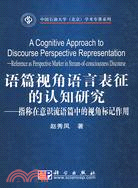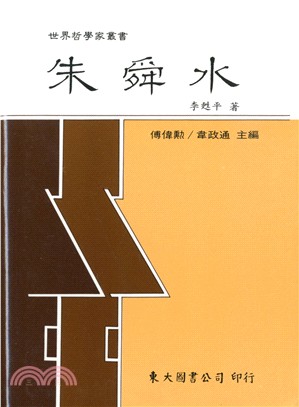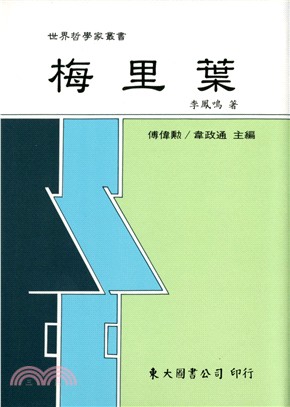相關商品
商品簡介
作者簡介
目次
商品簡介
語篇視角的表達方式與語篇體裁的特征有關,本書選擇意識流語篇為典型語類,考察指稱在該類語篇中的視角標識作用。通過對不同構形操作下的指稱形式進行分析,總結歸納視角化程度較高的語篇中指稱語的規律。通過分析指稱形式在長語篇中的分布特征,發現標記性指稱形式,并利用提出的認知構建模式加以闡釋,能夠從宏觀上把握語篇視角的動態變化軌跡,區別敘事語段和視角化語段。 本書共分7章,主要包括研究背景、模式建構和實證分析幾部分內容。 本書立足于語篇,結合認知語言學理論和敘事語篇的語類特征,對語篇視角化的不同語言表征提出一個統一的理論闡釋,擴大了研究范疇,加深了對這一現象的理解,本書的認知語言學研究視角對文學教學具有指導意義,有利于提高對復雜敘事語篇(如意識流)語篇的解讀和賞析能力,培養相應的閱讀策略。
作者簡介
趙秀鳳,山東濟陽人,1986年考入山東大學外語系。1993年畢業于山東大學,獲文學碩士學位。2003年~2006年在北京師范大學深造,獲英語語言文學博士學位,師從田貴森教授。1993年至今執教于中國石油大學(北京)外語系,現為外語系副主任、教授、碩士生導師。1998年8月~1999年2月在美國懷俄明大學做訪問學者。2001年4月~2002年4月,在日本福井縣做國際交流員。 曾先后在《外語學刊》、《外語教學》、《解放軍外國語學院學報》、《四川外語學院學報》等外語類核心期刊和外語界專業期刊發表學術論文20余篇,并主編或參編教材、譯著多部。研究方向:認知語言學、文體學、語篇分析。
目次
叢書序
序
自序
Chapter 1 Introduction
1.1 Discourse perspective
1.2 Discourse perspective representation
1.3 Discourse perspective representation in stream-of-consciousness fiction
1.4 Reference
1.5 Objectives of this study
1.6 Data and methodology
1.7 Organization of the book
Chapter 2 Previous Researches on Discourse Perspective Representation
2.1 Approaches to discourse perspective representation
2.1.1 Formalistic approaches
2.1.2 Functional approaches
2.1.3 Cognitive approaches
2.2 Cognitive studies on reference
2.2.1 Langacker: epistemic footing of reference
2.2.2 Fauconnier: accessible space of reference
2.2.3 Ariel: addressee-oriented accessibility
2.2.4 Chafe: protagonist-oriented accessibility
2.2.5 Li & Zubin: discourse continuity and perspective taking
2.3 Summary
Chapter 3 A Cognitive Model to Discourse Perspective Representation
3.1 Theoretical foundations
3.1.1 Preliminary assumptions
3.1.2 Mental Space Theory: DPR as mental space configuration
3.1.3 Ground and viewing arrangement: DPR as ground configuration
3.2 A cognitive model to DPR construction
3.2.1 Preliminaries to DPR construction
3.2.2 A ground-based model
3.3 Specific illustrations to the model
3.3.1 Categorization of the representational modes
3.3.2 Expressive/reportive representation
3.3.3 Motivations for ground configuration
3.4 Summary
Chapter 4 Ground Alignment and Reference to the Experiencer
4.1 Grounding nature of referring expressions
4.1.1 Components of referring expressions
4.1.2 Grounding and coding the experiencer
4.2 G-alignment and reference to the experiencer
4.2.1 Coded as full NPs
4.2.2 Coded as reduced NPs
4.3 G-alignment and reference to the experiencer
4.3.1 Non-overt code for maximal subjectivity
4.3.2 Coded as first person pronouns
4.3.3 Coded as second person pronouns
4.3.4 Coded as third person NPs
4.3.5 Summary: mental model of reality and self-reference
4.4 Blend alignment and third person reflexives
4.4.1 Cognitive structure of reflexives
4.4.2 Coded as unbound reflexives
4.4.3 Coded as long-distance bound reflexives
4.5 Degree of objectification and self-referring expressions
4.6 Summary
Chapter 5 Ground Alignment and Reference to the Experienced Object
5.1 Preliminaries on reference to the experienced object
5.1.1 Relevant issues
5.1.2 Ground configurations for reference to the experienced in general
5.2 G-alignment and reference to the experienced object
5.2.1 Schematic reference from omnipresence for detachment
5.2.2 Transparent reference from omniscience for unified reportiveness
5.3 G'-alignment and reference to the experienced object
5.3.1 Non-basic categorized reference for expressiveness
5.3.2 (In)definite reference for expressiveness
5.3.3 Perspectivized reference for displaced expressivity
5.4 Co-alignment and reference to the experienced object
5.4.1 Metaphorical reference for dramatization
5.4.2 Opaque reference for the tinge of expressiveness
5.5 Summary
Chapter 6 Ground Configuration and Reference Distribution
6.1 Ground-based accessibility
6.1.1 Epistemic nature of grounding
6.1.2 Access path in space configurations
6.1.3 A model of ground-based accessibility
6.2 Distribution of reference to the experiencer
6.2.1 Suppressed reference to the experiencer
6.2.2 Reference distribution in discourses with parentheticals
6.3 Distribution of reference to the experienced object
6.3.1 Marked pronominal reference for immediacy
6.3.2 Marked nominal reference for detachment
6.4 Ground confgurafion and categorical reference interaction
6.4.1 Local reference coordination and degree of expressiveness
6.4.2 Global reference distribution and ground shifts
6.5 The interplay of reference and other devices in DPR categorization...
6.6 Summary
Chapter 7 Conclusion
7.1 Summary
7.2 Limitations and implications
Bibliography
Appendix
List of Tables
Table 3.1 DPR components in fictional narrative discourse
Table 3.2 Parameters of ground configuration
Table 4.1 References to self and others (we, us, our) in Samples from Ulysses
Table 4.2 Occurrence of LDB and unbound ziji (自己) in SOC fiction
Table 4.3 Occurrence of LDB and unbound English reflexives in SOC fiction
Table 4.4 References to Self in sampled passages from Ulysses
Table 6.1 Correlation between references and degree of expressiveness/reportiveness
Table 6.2 Correlations among ground alignment, space configuration and expressiveness
序
自序
Chapter 1 Introduction
1.1 Discourse perspective
1.2 Discourse perspective representation
1.3 Discourse perspective representation in stream-of-consciousness fiction
1.4 Reference
1.5 Objectives of this study
1.6 Data and methodology
1.7 Organization of the book
Chapter 2 Previous Researches on Discourse Perspective Representation
2.1 Approaches to discourse perspective representation
2.1.1 Formalistic approaches
2.1.2 Functional approaches
2.1.3 Cognitive approaches
2.2 Cognitive studies on reference
2.2.1 Langacker: epistemic footing of reference
2.2.2 Fauconnier: accessible space of reference
2.2.3 Ariel: addressee-oriented accessibility
2.2.4 Chafe: protagonist-oriented accessibility
2.2.5 Li & Zubin: discourse continuity and perspective taking
2.3 Summary
Chapter 3 A Cognitive Model to Discourse Perspective Representation
3.1 Theoretical foundations
3.1.1 Preliminary assumptions
3.1.2 Mental Space Theory: DPR as mental space configuration
3.1.3 Ground and viewing arrangement: DPR as ground configuration
3.2 A cognitive model to DPR construction
3.2.1 Preliminaries to DPR construction
3.2.2 A ground-based model
3.3 Specific illustrations to the model
3.3.1 Categorization of the representational modes
3.3.2 Expressive/reportive representation
3.3.3 Motivations for ground configuration
3.4 Summary
Chapter 4 Ground Alignment and Reference to the Experiencer
4.1 Grounding nature of referring expressions
4.1.1 Components of referring expressions
4.1.2 Grounding and coding the experiencer
4.2 G-alignment and reference to the experiencer
4.2.1 Coded as full NPs
4.2.2 Coded as reduced NPs
4.3 G-alignment and reference to the experiencer
4.3.1 Non-overt code for maximal subjectivity
4.3.2 Coded as first person pronouns
4.3.3 Coded as second person pronouns
4.3.4 Coded as third person NPs
4.3.5 Summary: mental model of reality and self-reference
4.4 Blend alignment and third person reflexives
4.4.1 Cognitive structure of reflexives
4.4.2 Coded as unbound reflexives
4.4.3 Coded as long-distance bound reflexives
4.5 Degree of objectification and self-referring expressions
4.6 Summary
Chapter 5 Ground Alignment and Reference to the Experienced Object
5.1 Preliminaries on reference to the experienced object
5.1.1 Relevant issues
5.1.2 Ground configurations for reference to the experienced in general
5.2 G-alignment and reference to the experienced object
5.2.1 Schematic reference from omnipresence for detachment
5.2.2 Transparent reference from omniscience for unified reportiveness
5.3 G'-alignment and reference to the experienced object
5.3.1 Non-basic categorized reference for expressiveness
5.3.2 (In)definite reference for expressiveness
5.3.3 Perspectivized reference for displaced expressivity
5.4 Co-alignment and reference to the experienced object
5.4.1 Metaphorical reference for dramatization
5.4.2 Opaque reference for the tinge of expressiveness
5.5 Summary
Chapter 6 Ground Configuration and Reference Distribution
6.1 Ground-based accessibility
6.1.1 Epistemic nature of grounding
6.1.2 Access path in space configurations
6.1.3 A model of ground-based accessibility
6.2 Distribution of reference to the experiencer
6.2.1 Suppressed reference to the experiencer
6.2.2 Reference distribution in discourses with parentheticals
6.3 Distribution of reference to the experienced object
6.3.1 Marked pronominal reference for immediacy
6.3.2 Marked nominal reference for detachment
6.4 Ground confgurafion and categorical reference interaction
6.4.1 Local reference coordination and degree of expressiveness
6.4.2 Global reference distribution and ground shifts
6.5 The interplay of reference and other devices in DPR categorization...
6.6 Summary
Chapter 7 Conclusion
7.1 Summary
7.2 Limitations and implications
Bibliography
Appendix
List of Tables
Table 3.1 DPR components in fictional narrative discourse
Table 3.2 Parameters of ground configuration
Table 4.1 References to self and others (we, us, our) in Samples from Ulysses
Table 4.2 Occurrence of LDB and unbound ziji (自己) in SOC fiction
Table 4.3 Occurrence of LDB and unbound English reflexives in SOC fiction
Table 4.4 References to Self in sampled passages from Ulysses
Table 6.1 Correlation between references and degree of expressiveness/reportiveness
Table 6.2 Correlations among ground alignment, space configuration and expressiveness
主題書展
更多主題書展
更多書展本週66折
您曾經瀏覽過的商品
購物須知
大陸出版品因裝訂品質及貨運條件與台灣出版品落差甚大,除封面破損、內頁脫落等較嚴重的狀態,其餘商品將正常出貨。
特別提醒:部分書籍附贈之內容(如音頻mp3或影片dvd等)已無實體光碟提供,需以QR CODE 連結至當地網站註冊“並通過驗證程序”,方可下載使用。
無現貨庫存之簡體書,將向海外調貨:
海外有庫存之書籍,等候約45個工作天;
海外無庫存之書籍,平均作業時間約60個工作天,然不保證確定可調到貨,尚請見諒。
為了保護您的權益,「三民網路書店」提供會員七日商品鑑賞期(收到商品為起始日)。
若要辦理退貨,請在商品鑑賞期內寄回,且商品必須是全新狀態與完整包裝(商品、附件、發票、隨貨贈品等)否則恕不接受退貨。

























